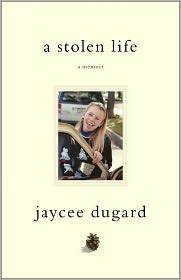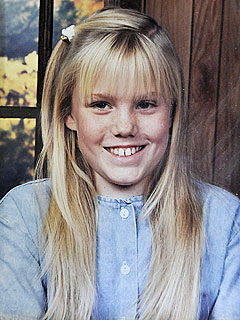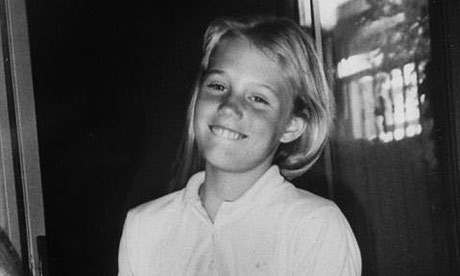Jaycee Dugard Pinecone Jewelry & the JAYC Foundation
A pinecone was the last thing Jaycee Dugard touched before she was dragged into the Garridos’ car two decades ago. It is “a symbol of hope and new beginnings,” she told Diane Sawyer in an interview for Prime Time Life. “There is life after something tragic.” Purchase pinecone jewelry to support the foundation here.
 “In the summer of 1991 I was a normal kid. I did normal things. I had friends and a mother who loved me. I was just like you. Until the day my life was stolen.”
“In the summer of 1991 I was a normal kid. I did normal things. I had friends and a mother who loved me. I was just like you. Until the day my life was stolen.”
Simon and Schuster has just released A Stolen Life, a memoir by Jaycee Dugard . There is also an ebook and an unabridged audio book, read by Dugard. A portion of the proceeds will go to The JAYC Foundation, which provides support and services for the timely treatment of families recovering from abduction and the aftermath of traumatic experiences. Scroll down for a link to Jaycee’s pinecone jewelry to support the foundation.

About the book : Dugard narrates the story in the present tense, beginning with the harrowing day of her abduction at the age of 11–her confusion, her terror, her absolute powerlessness as Phillip and Nancy Garrido paralyzed her with a stun gun, dragged her into the car, shoved her to the floor, and drove her from Tahoe to Antioch, California, to the dismal backyard compound where she would spend the next 18 years of her life. Scroll down to read an excerpt.
Each chapter is followed by a reflection, in which Dugard, who has been in therapy since her rescue in 2009, reveals her feelings about the ordeal now, as an adult looking back at the suffering of her younger self. Dugard’s writing style is direct and lucid, filled with detail; the naturalness of her writing is all the more impressive given the fact that her formal education stopped at the age of 11.
Dugard writes about discovering she was pregnant at the age of 14, and about delivering two baby girls in her back yard prison. She writes about how dependent she was on Phillip Garrido for everything. For most of the first six years of her captivity, she was locked in a soundproof room. Garrido convinced her that he knew everything she did. She lived in fear of getting “in trouble,” certain that he would use the stun gun again.
When her youngest daughter was two years old, Dugard was finally allowed to begin going out in public. By then, she had been so manipulated by Garrido that she believed his terrible lie: that she was safer in the back yard compound than she would be out in the world, and that her daughters were safer there as well. On outings, she avoided looking people in the eye; repeatedly, she mentions her feelings of invisibility.
Through it all, we see Dugard’s attempt to live as normal a life as possible–caring for a series of beloved pets, creating a school for her children, establishing small routines, and later, keeping the Garridos financially afloat by running the family printing business–often while Phillip and Nancy spent their days in a drug-induced slumber. She even keeps a journal, portions of which are presented–in her own childish print–in the book. Later journal entries reveal Jaycee struggling with many of the things any twenty-something young woman struggles with: her weight, her desire to eat more healthfully and be more motivated. These entries are extraordinarily poignant, infused with Jaycee’s longing, all these years after her abduction, to be with her mother; her desire to be free mixed with uncertainty about where she would go, or how she would take care of her children, if she were ever to leave; her confusion about Nancy and Phillip’s role in her life. After all, they have become her “family,” but she desperately wants to be with her real family, to be held once again by the mother whose face she can no longer remember, but whose love she remembers vividly.
Some of her journal entries include lists of dreams she has for her life. Along with taking a hot-air balloon ride, visiting Ireland, and learning two languages, she dreams of writing a best-seller. She has done just that; the day of its release, A Stolen Life hit #1 on Amazon.
Dugard also explains her reason for writing this book: she will no longer hide Garrido’s secret, she will no longer protect him from the truth of what he did to her. Others will know the brutality of his abuse.
This is a heartbreaking book from a brave and unbelievably resilient young woman, who now looks forward to a normal life for her and her two daughters. It is also inspiring; so much was taken from Dugard, and yet she has chosen to move forward without hatred. While she still experiences loneliness, she writes, she has fully embraced the joys of making home-cooked meals with her family, walking on the beach, and simply being free. Buy the book.
Having done a great deal of research into missing children while writing The Year of Fog, I followed Jaycee’s case with deep interest. One cannot help but be amazed by the fact that she survived and raised her daughters in such harrowing circumstances, and that she has now turned her efforts to helping other families through the J A Y C Foundation. In her interview with Diane Sawyer, which aired July 10 on Prime Time Life, Jaycee emphasized the fact that crimes such as those committed by the Garridos affect not only the victims, but also the victims’ families.
A note about Michaela Joy Garecht: Jaycee’s recovery momentarily gave hope to other parents of missing children–in particular to Sharon Murch, the mother of Michaela Joy Garecht, who was kidnapped from a Hayward, California, parking lot in 1988, and who has never been found. Sharon Murch is still looking for Michaela; read more about her story here.
Excerpt from A Stolen Life:
In the summer of 1991 I was a normal kid. I did normal things. I had friends and a mother who loved me. I was just like you. Until the day my life was stolen.
For eighteen years I was a prisoner. I was an object for someone to use and abuse.
For eighteen years I was not allowed to speak my own name. I became a mother and was forced to be a sister. For eighteen years I survived an impossible situation.
On August 26, 2009, I took my name back. My name is Jaycee Lee Dugard. I don’t think of myself as a victim. I survived.
A Stolen Life is my story—in my own words, in my own way, exactly as I remember it.
View a video clip of Diane Sawyer’s interview with Jaycee Dugard here.
Title: The Year of Fog
Publisher: Random House Books
Summary:
The New York Times bestselling literary mystery about memory, obsession, and one woman's search for a missing child.
"Profound, deeply moving, endlessly gripping; you will devour it in a weekend and turn it over to begin again.” ~Andrew Sean Greer, Pulitzer Prize winning author of LessGet the book: Amazon / Barnes & Noble / Bookshop.org
"I couldn't turn the pages fast enough. A missing child, a haunting neighborhood, a search for love…The Year of Fog has it all. Make a sandwich now: you won’t stop reading for hours." Amanda Eyre Ward, New York Times bestselling author of TheJetsetters "Wonderful...fascinating." The San Francisco Chronicle "Mesmerizing and harrowing." London Daily Mail Add The Year of Fog to GoodreadsAbout the Book
Life changes in an instant. On a foggy San Francisco beach. In the seconds when Abby Mason—photographer, fiancée soon-to-be-stepmother—looks into her camera and commits her greatest error. Heartbreaking, uplifting, and beautifully told, here is the riveting tale of a family torn apart, of the search for the truth behind a child’s disappearance, and of one woman’s unwavering faith in the redemptive power of love. Six-year-old Emma vanished into the thick San Francisco fog. Or into the heaving Pacific. Or somewhere just beyond: to a parking lot, a stranger’s van, or a road with traffic flashing by. Devastated by guilt, haunted by her fears about becoming a stepmother, Abby refuses to believe that Emma is dead. And so she searches for clues about what happened that morning—and cannot stop the flood of memories reaching from her own childhood to illuminate that irreversible moment on the beach. Now, as the days drag into weeks, as the police lose interest and fliers fade on telephone poles, Emma’s father finds solace in religion and scientific probability—but Abby can only wander the beaches and city streets, attempting to recover the past and the little girl she lost. With her life at a crossroads, she will leave San Francisco for a country thousands of miles away. And there, by the side of another sea, on a journey that has led her to another man and into a strange subculture of wanderers and surfers, Abby will make the most astounding discovery of all—as the truth of Emma’s disappearance unravels with stunning force. A profoundly original novel of family, loss, and hope—of the choices we make and the choices made for us—The Year of Fog, now in its 31st printing, is a classic literary mystery set in San Francisco, a tour de force about memory, forgetting, love, and forgiveness.- A Kirkus Reviews Top Pick for Reading Groups
- A New York Times bestseller
- A Washington Post "A List" book
- Best Books of the Year, Library Journal & News of the World
- A San Francisco Chronicle Notable Book
- An official selection of Silicon Valley Reads






